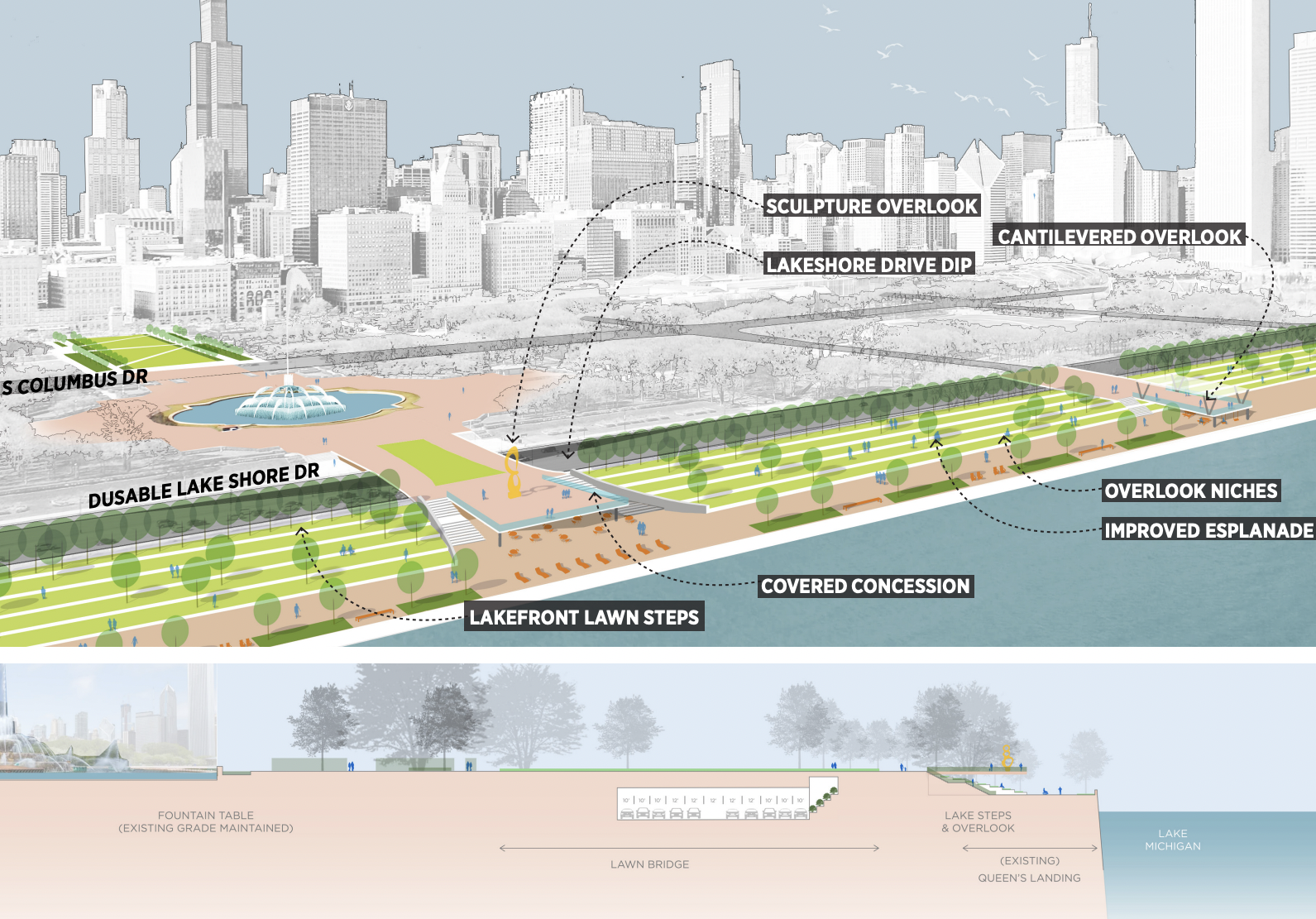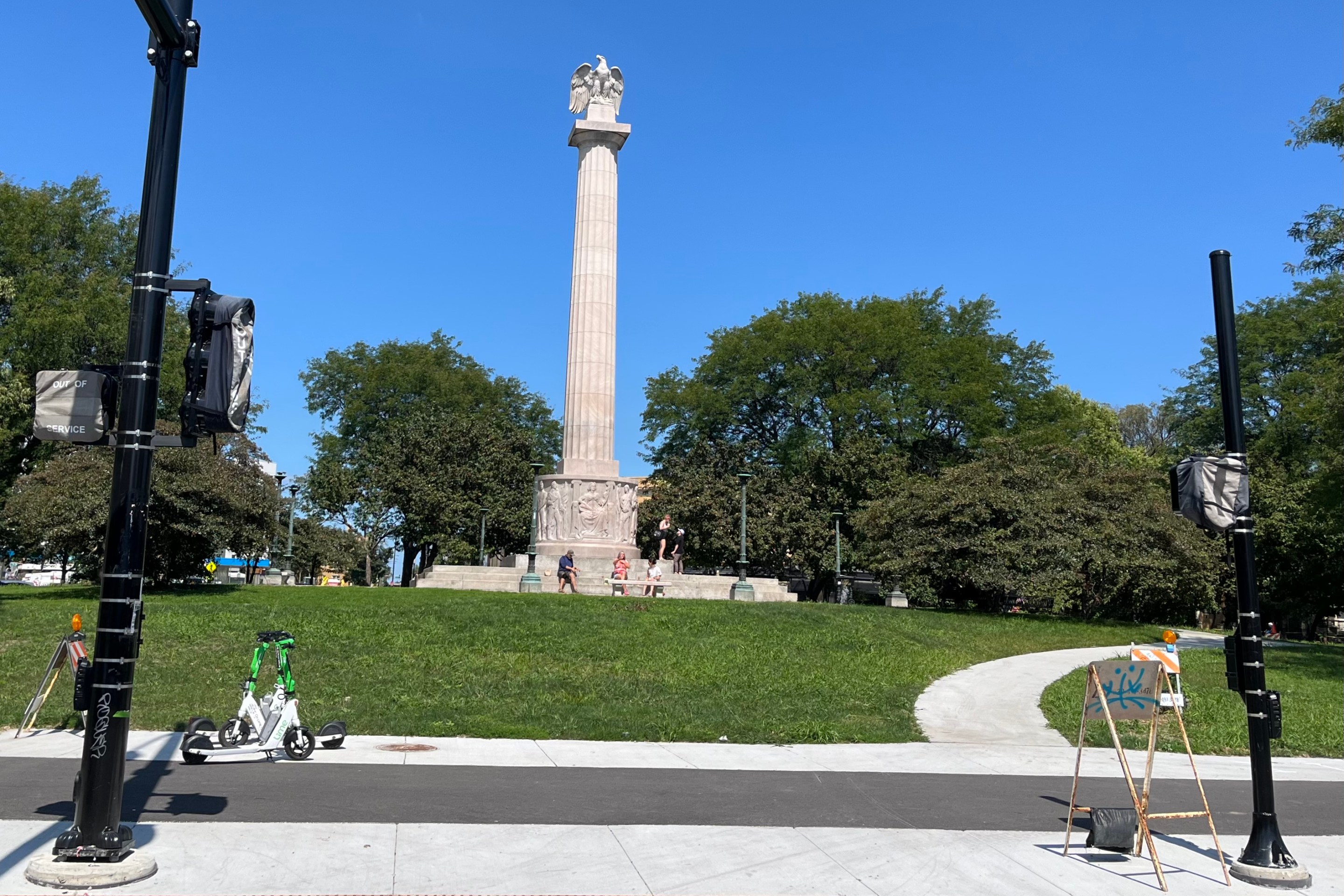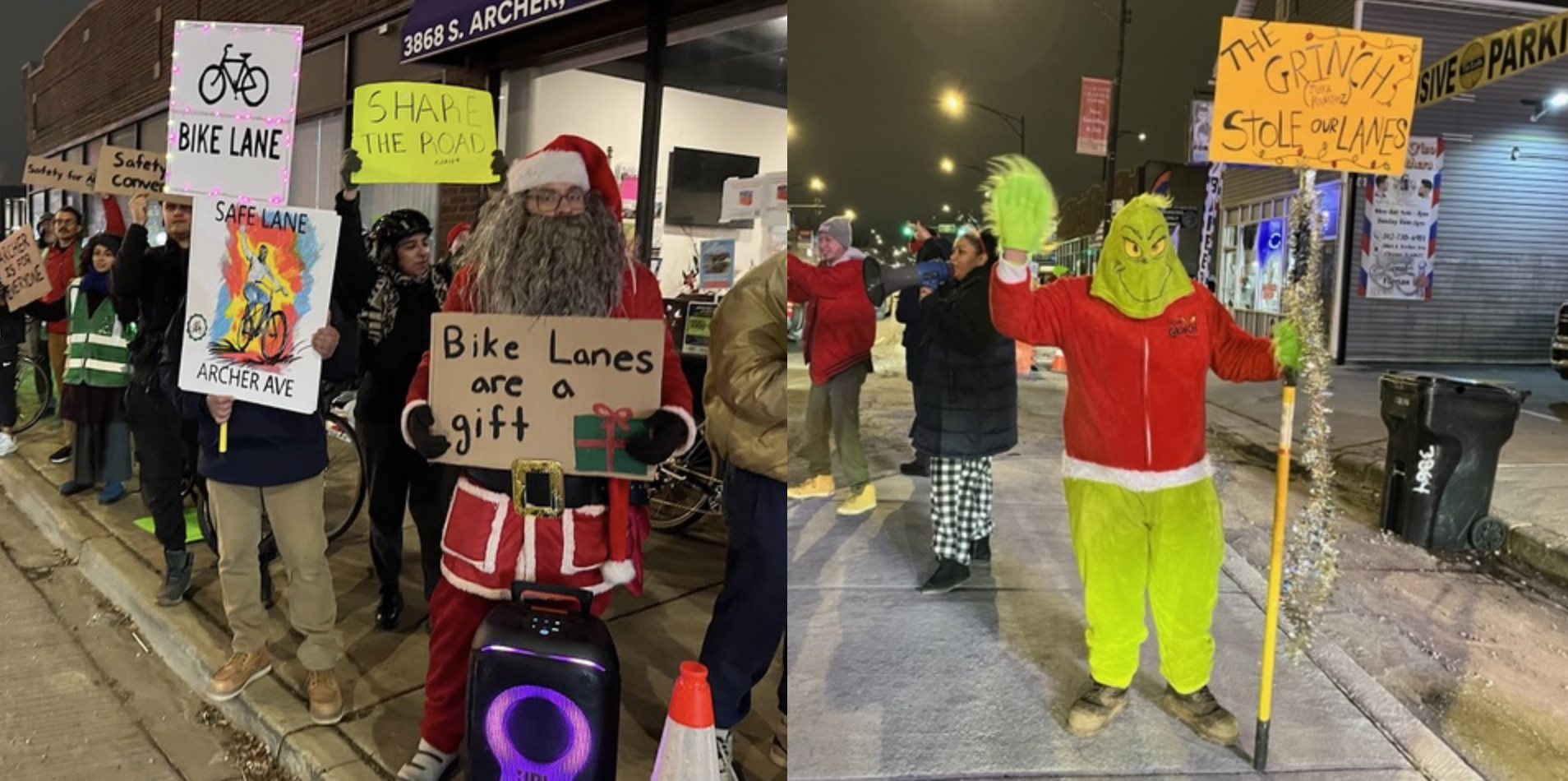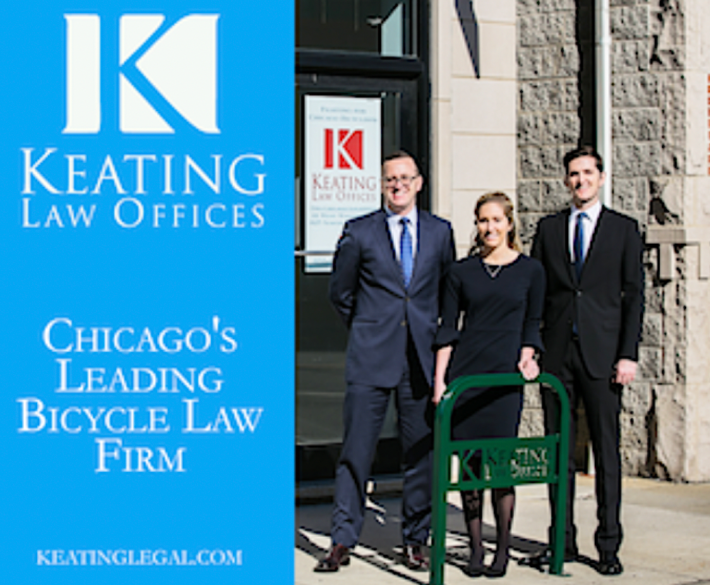
Livable streets advocates were well represented at yesterday's community meeting on "The Grant Park Framework Plan – Chicago’s Front Yard Reimagined" at the Maggie Daley Park fieldhouse, 337 E. Randolph St. And they walked away happy, because the proposal includes putting a deck over DuSable Lake Shore Drive downtown to help make the the Third Coast more accessible and attractive.
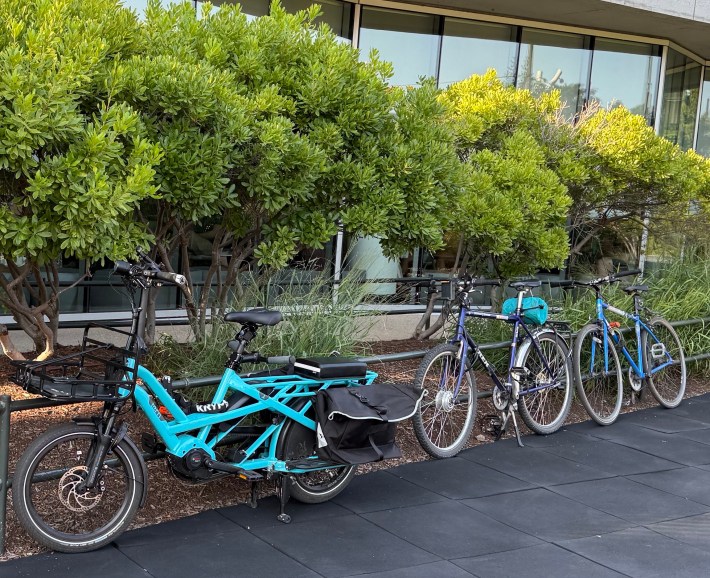
Residents could provide feedback on the plan at the event, or at an online-session the previous day. "Together, our ideas will help shape the future of the park," the Chicago Park District invite said.
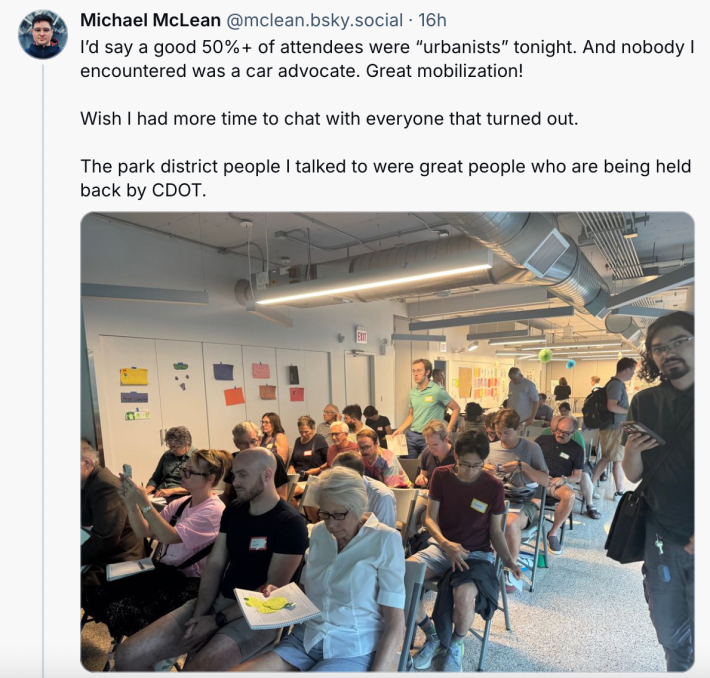
According to the park district's website, the Grant Park Framework Plan has been in development for many years. The document was first adopted by the CPD's board back in 2002 under then-mayor Richard M. Daley. Over the next two decades, several elements of the plan have been implemented, such as the development of the aforementioned park (named for the mayor's late wife), Millennium Park, and the skate park near Roosevelt Road. However, some proposals in the plan, such as redevelopment of the Lakefront, have not been realized while others, like plans for Butler Field, east of Columbus drive between Washington and Monroes streets, have become outdated.
In 2022, the CPD began its efforts to modernize the Grant Park Framework Plan. "The updated framework plan will serve as a tool for the park district and the greater community to prioritize improvements as resources to invest in the park become available," the website says. "The plan will address Grant Park's role as a neighborhood park, a city destination, and as public open space with national significance as a historic park. The plan will be the guiding document that outlines priorities and ensures that improvements are implemented in a coordinated manner with respect to the historic integrity of the park and the evolving needs of the community."
Maria Pellot, principle/design director for the consultant UrbanWorks, provided more background during the presentation."We've collected information based on topics of preservation, landscape recreation events that happen in the park, mobility and safety logistics, and we gathered your concerns, the possibilities, the results from the public input to clarify the designers and the priorities of what could happen next," she said "And although there are many different voices, many different opinions and priorities, we were able to find a common ground and a common thread for the park."
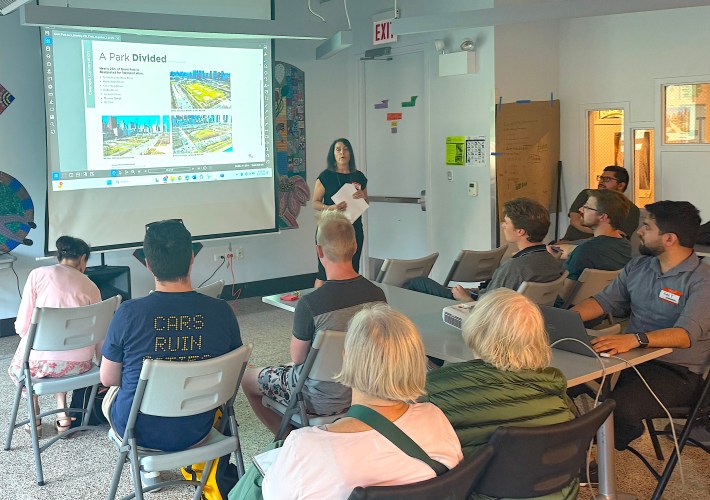
"Essentially what we've heard from everyone [is], you want the framework plan to re-envision the park as a place that is safe, sustainable, connected, inclusive, flexible, and dynamic," Pellot continued. "That provides economic opportunity. That is rooted in its legacy and its history, but also looks forward to a future that reinvigorates the park for decades to come. So, these principles really provided the shared vision that helped us create ideas."
One of the topics discussed during the meeting was improvement of DLSD, the eight-lane highway that serves as an often-deadly barrier to people trying to get to and from our city's iconic waterfront. The plan proposes narrowing the mixed-traffic lanes, but not converting them to other uses, such as dedicated bus lanes. This would make room for an area of refuge for people crossing the road. The document also recommends using planter boxes to improve the separation between drivers and pedestrian to improve safety; planting more tree, and upgrading the lighting.
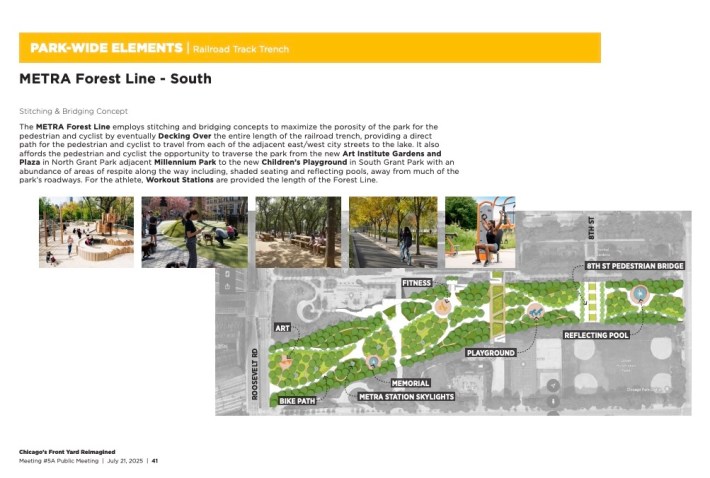
The most exciting announcement was that the plan calls building decks over DLSD, as well as the Metra Electric District and South Shore Line railroad trench through the park, providing a direct route to the lake for people on foot and bikes. It would also provide the opportunity to transition from the new Art Institute of Gardens to the new Children's Playground, a stretch of land featuring shaded seating and reflecting pools.
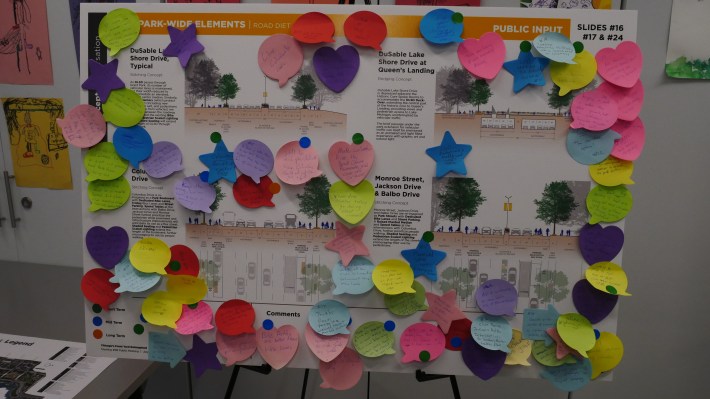
After the presentation, Michael Weiss, a advocate who learned about the meeting through Strong Town Chicago, said he's jazzed about the idea of decking the Drive. "That can provide a lot of pedestrian access to the lakefront, some more features, more continuity through the space." He added that he's like to see road diets on Balbo Drive, Jackson Drive, Monroe Street, and Columbus Drive to help make the area around the park more accessible and people-friendly. "But in general, I'm optimistic about what's being produced here."
Video of the presentation by Austin Busch for the Chicago, Bike Grid Now! advocacy group.
View slides from the presentation here.

Did you appreciate this post? If you haven't already, please consider making a tax-deductible donation here to help Streetsblog Chicago continue to report and advocate on sustainable transportation issues in 2026. Thank you!
